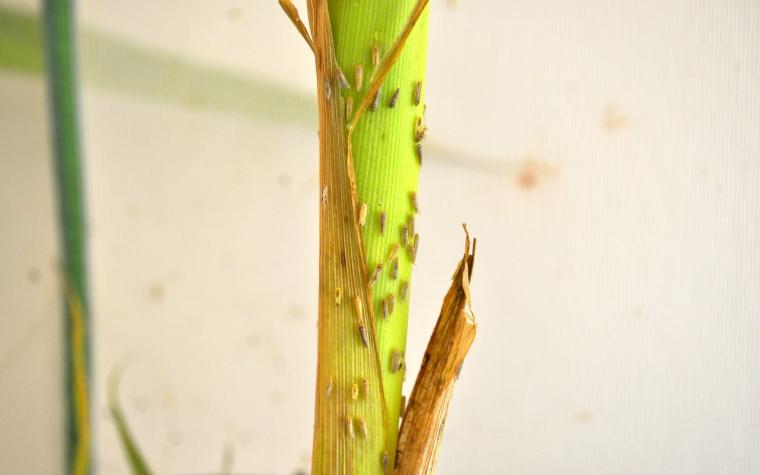Writer
Linda GeistCOLUMBIA, Mo. – University of Missouri Extension state crops entomologist Ivair Valmorbida expects that growers will see corn leafhoppers again in 2025.
MU Extension faculty found corn leafhoppers in Missouri corn crops for the first time in 2024. Corn leafhoppers carry corn stunt disease, which can lead to 100% yield loss, says Valmorbida.
MU Extension agronomist Tim Schnakenberg reported Missouri’s first case of corn stunt disease in Lawrence County in southwestern Missouri in August. Since then, MU Extension faculty have confirmed corn leafhopper in Gentry, Knox, Boone, Pike, Lincoln, Warren, Gasconade, Osage, Morgan, Bates, Laclede, Barton and Christian counties.
Prevalent in South America, Mexico, Puerto Rico, corn leafhopper spread to the Midwestern U.S. in 2024. The small, pale yellow to greenish yellow insects feed on corn and its wild relatives and carry pathogens that cause corn stunt disease.
This leads to deformed grain, loose kernels and short stalks, says Valmorbida. Corn leafhoppers also degrade corn reduce yields by feeding on leaves to suck plant sap.
Corn leafhoppers reproduce only on corn and its relatives.
The insects are difficult to spot because they are only 1/8 inch long. One indicator of infestation is shiny leaves due to honeydew excretions left after feeding. The honeydew can lead to a black, sooty mold that affects photosynthesis and plant health.
Corn leafhoppers also feed on gama grasses, sorghum, Johnson grass and millet. They move rapidly within and among cornfields and fly or jump away when disturbed. They can be found in shaded areas of corn, resting and feeding in the whorl of young plants and hidden on the underside of leaves.
Corn stunt symptoms show as chlorosis and/or reddening of leaf tips. After that, the shorter corn plant produces auxiliary buds and multiple ears with loose or missing kernels.
Valmorbida recommends using yellow stick cards and visual inspections for scouting cornfields. MU Extension specialists are conducting studies to see if corn leafhopper can overwinter in southwestern Missouri, which is typically warmer than northern counties.
Once corn stunt disease can be seen, plants are already infected and there is nothing farmers can do. Management strategies must focus on the insect. Valmorbida recommendations to prevent infestation:
- Remove volunteer plants that may serve as a green bridge host for the corn leafhopper and as a reservoir for corn stunt pathogens.
- Plant as early as possible to reduce the chances of infestation by corn leafhoppers.
- Insecticidal seed treatments can provide control of corn leafhoppers only up to the V3 growth stage.
- Consider foliar insecticide applications if corn leafhoppers are present before the V8 corn growth stage.
You can sign up for pest alerts in your area at https://ipm.missouri.edu.
Photos
https://extension.missouri.edu/sites/default/files/wysiwyg/Extensiondata/NewsAdmin/Photos/2024/20241126-leafhopper-1.jpg
Corn leafhopper, found in Missouri for the first time in 2024, carries corn stunt disease, which can cause up to 100% yield loss in corn crops. Photo by Lucas Bonuma Severo, University of Missouri.
https://extension.missouri.edu/sites/default/files/wysiwyg/Extensiondata/NewsAdmin/Photos/2025/20250107-corn-stunt-1.jpg
This 2024 photo of corn from fields in southwestern Missouri shows the difference between normal ears of corn and those affected by corn stunt disease. Corn stunt disease results in deformed grains and lower yields. Photo courtesy of MU Extension agronomist Tim Schnakenberg.

